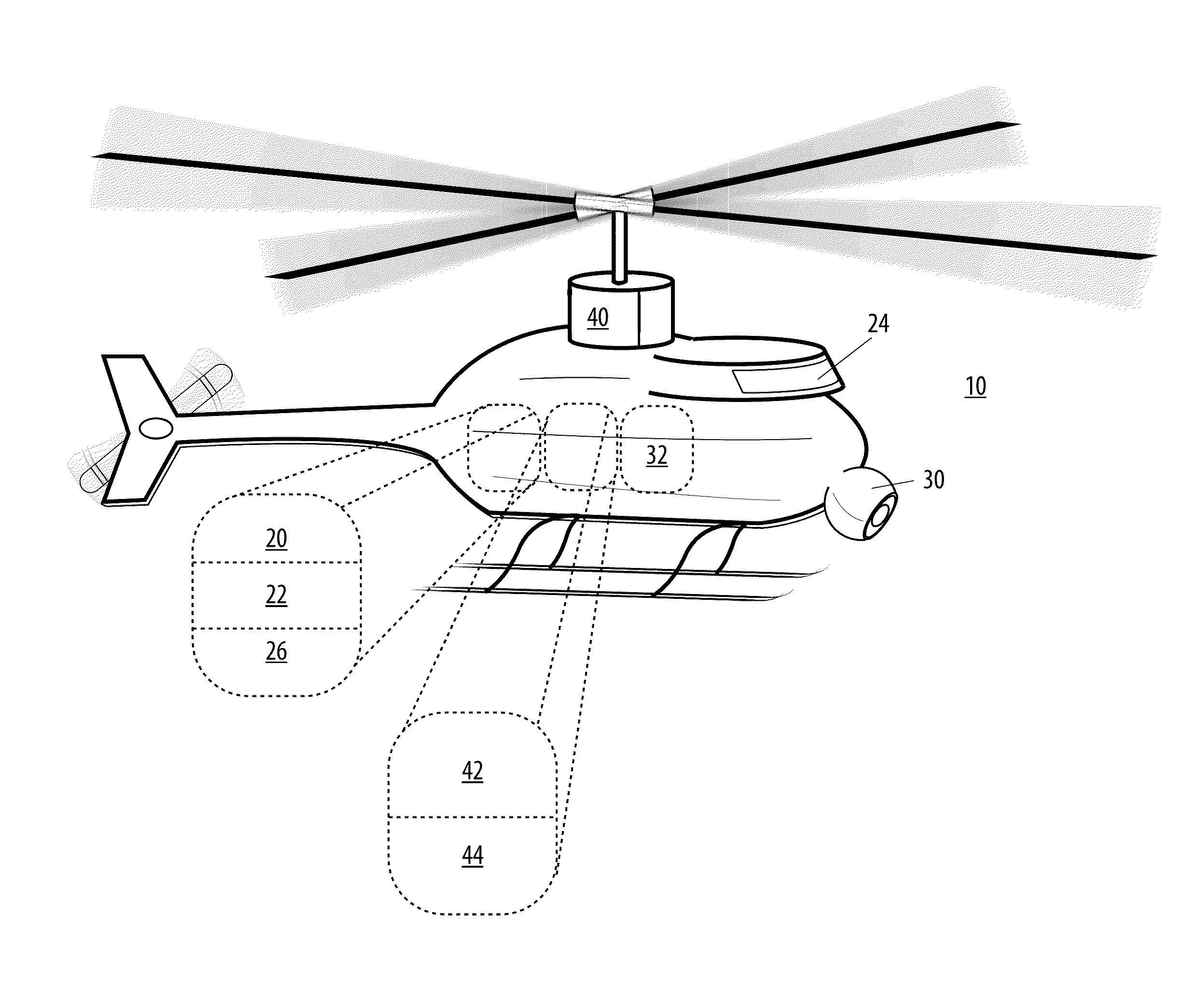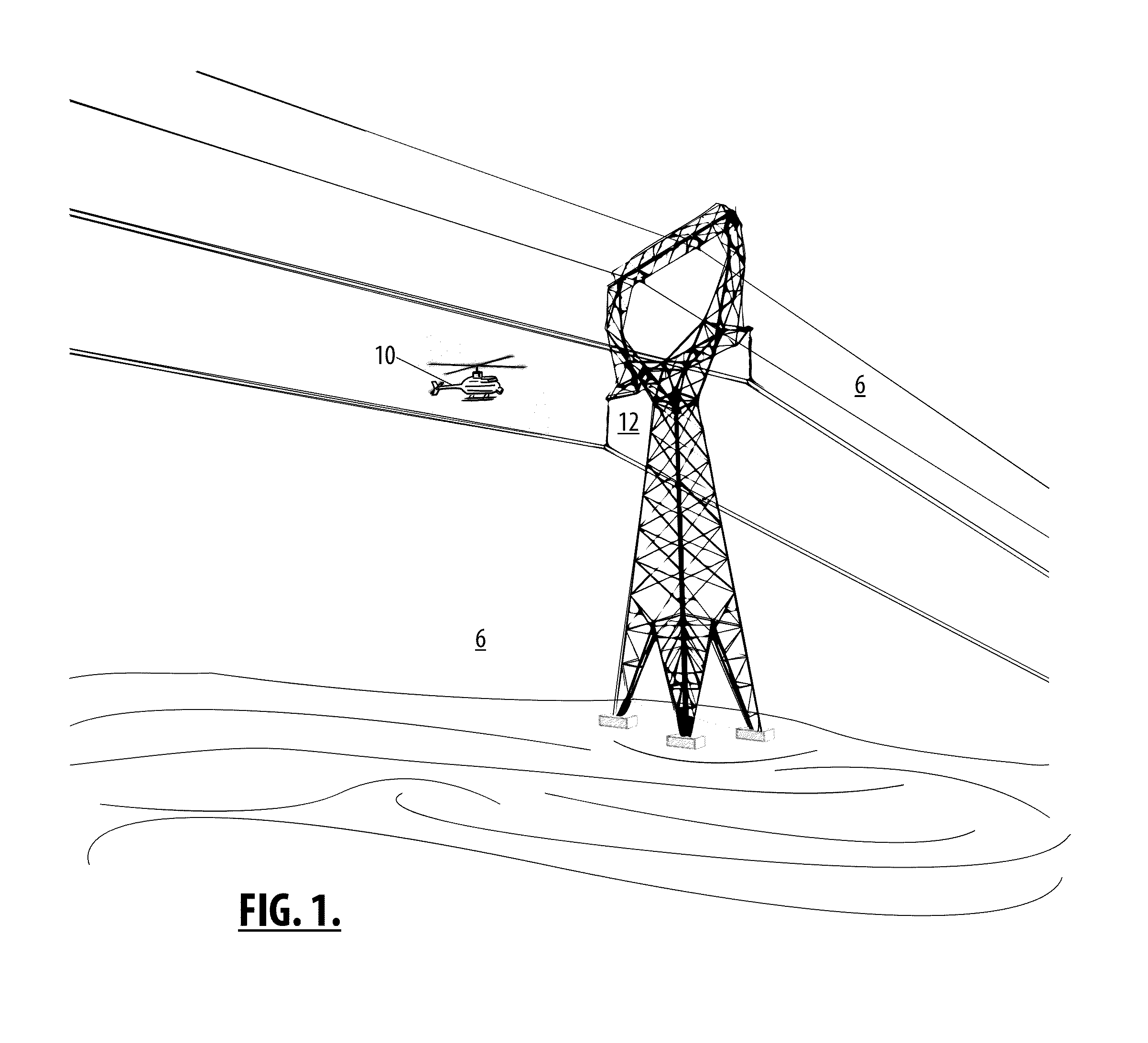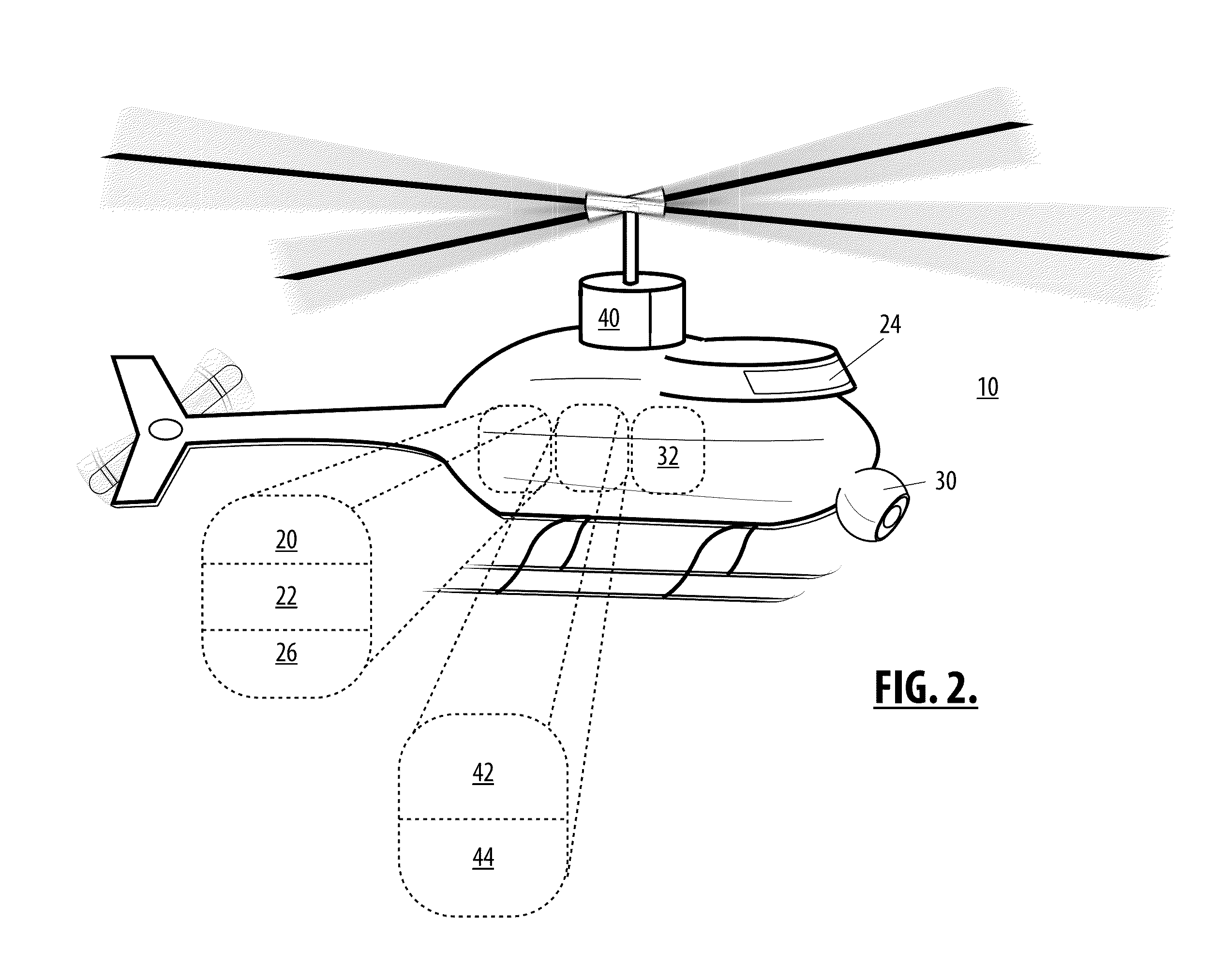Unmanned aerial vehicle for monitoring infrastructure assets
a technology of infrastructure assets and unmanned aircraft, which is applied in the direction of vehicle position/course/altitude control, process and machine control, instruments, etc., can solve the problems of increasing the cost of conventional methods, and increasing the operating cost of helicopter monitoring, so as to maximize the effectiveness of inspection and long flight times , the effect of stable platform for a camera
- Summary
- Abstract
- Description
- Claims
- Application Information
AI Technical Summary
Benefits of technology
Problems solved by technology
Method used
Image
Examples
Embodiment Construction
[0021]An important part of the effectiveness of an inspection system such as the type described herein, as well as a factor that increases the utility and suitability of the present invention to the task of utility and other line inspections, is the ability of an aerial system to maneuver within the environment to and around the inspection point without incurring damage to itself or to articles within the environment. While some of the obstacles may be mitigated or minimized by the establishment of a consistent utility right-of-way, thus allowing a free and clear flight path above and to the sides of the lines and towers of the line under inspection, during a detailed inspection a drone according to the present invention may nevertheless encounter obstructions that must be avoided if operation is to be successful and maximally useful. In a typical electrical distribution arrangement, obstructions that may cause damage, or be damaged, include the transmission lines themselves and the...
PUM
 Login to View More
Login to View More Abstract
Description
Claims
Application Information
 Login to View More
Login to View More - R&D
- Intellectual Property
- Life Sciences
- Materials
- Tech Scout
- Unparalleled Data Quality
- Higher Quality Content
- 60% Fewer Hallucinations
Browse by: Latest US Patents, China's latest patents, Technical Efficacy Thesaurus, Application Domain, Technology Topic, Popular Technical Reports.
© 2025 PatSnap. All rights reserved.Legal|Privacy policy|Modern Slavery Act Transparency Statement|Sitemap|About US| Contact US: help@patsnap.com



